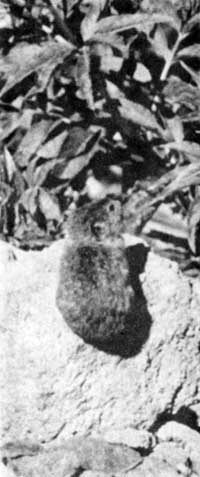The Harvest Of A Quiet Eye
By Clarence J. Nordstrom, Ranger Naturalist
One afternoon in mid-July, when sunbathing in an open space not far from Park Headquarters, I heard the sudden whir of a miniature airplane motor within inches of me. It passed as quickly as it came. In a matter of seconds the sound was repeated. Watching for the cause, I shortly saw a blurr as something shot toward me and then quickly disappeared, accompanied by the same hum. It suddenly dawned on me that this was the season of the hummingbirds and that they, like humans, are curious creatures and may have been shooting low merely to view better an object obviously out of place in their habitat.
* * * * * * * * * *
It was afternoon in late July, after a body-shaking ride over one of the fire roads. I had gone to the Crater Spring bogs for the purpose of getting photographs of three insect-eating plants, including two sundews, Drosera rotundifolia L. and Drosera angIica Huds., and the rather rare bladderwort, Utricularia intermedia Hayne.
While examining a sundew, my eyes happened to fall upon a most fascinating sight. On a nearby flower, a lady’s thumb, a bee had settled in its search for nectar. Upon this insect, with legs wrapped around it, was a large and beautiful, white, spotted spider having a head tiny in comparison with its extremely large, round body. Close examination showed that the bee was shrunken and motionless. It was evident that the spider had either paralyzed the bee or stung it to death. Then it had proceeded to suck out the body juices, filling its own body seemingly to the bursting point — a habit characteristic of the crab spiders (thomisids), to which group this individual apparently belongs. The bee was in perfect condition except for this aspect which suggested a deflated balloon.
 Cony beside a red elderberry bush. From Kodachrome by Welles and Welles. |
* * * * * * * * * *
When I was casually winding my way down the Lake Trail one morning, with eye ever alert for a new flower just emerging, a strange bird, or some other thing of interest, my attention was caught by a green branch, approximately sixteen inches long, moving crosswise over the trail. It appeared to be propelling itself, until — after a few seconds, at the head end — a cony suddenly appeared from nowhere. The long green leaves parted, exposing the little brown creature which evidently had decided that early August was not too soon to begin preparing its hay pile for the long winter ahead.
Apparently the animal’s attention was so intent upon its instinct-inspired task that it either failed to notice or deliberately ignored movement that ordinarily would have driven it to cover. Since the moving branch was within three or four feet of me before it disappeared under the rocks, I could clearly distinguish the red elderberry leaves that the cony had chosen to include in his winter food supply.
* * * * * * * * * *
Sitting on a ledge within a few feet of the Lake Trail during a prolonged pause on my upward climb, I noticed nine stationary white dots on the blue water. They formed a perfect arrow, four making up the head, five the shaft.
Suddenly the arrow broke as the dots changed position and as some of them left the surface and winged their way aloft. Probably never again will I see nine California gulls, Larus californicus Lawrence, line themselves up, by pure chance, in this perfect formation.

